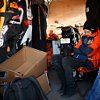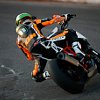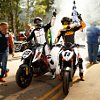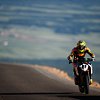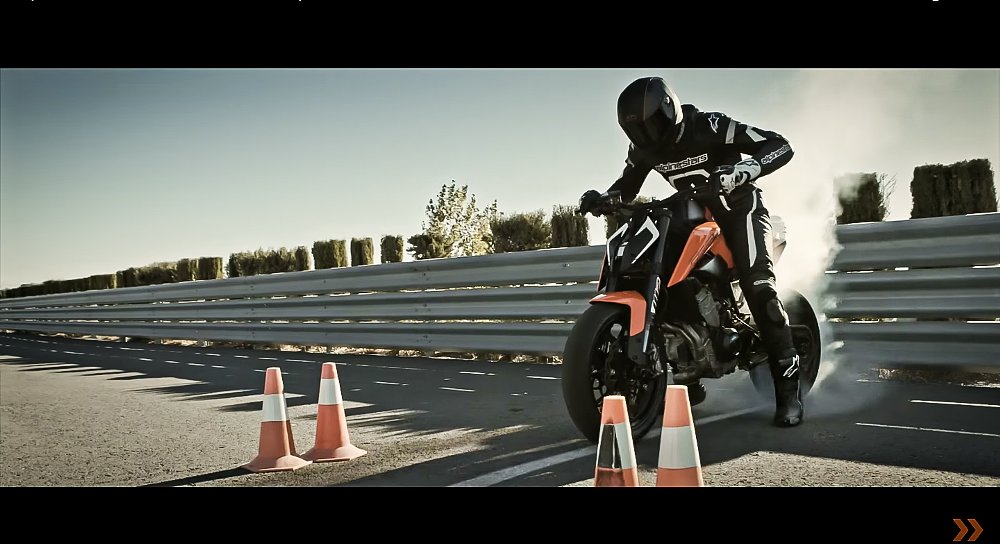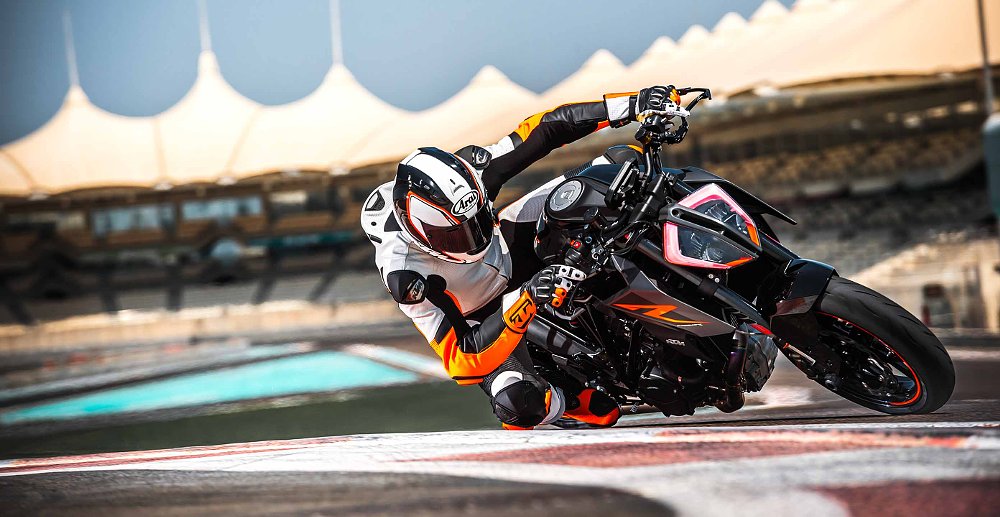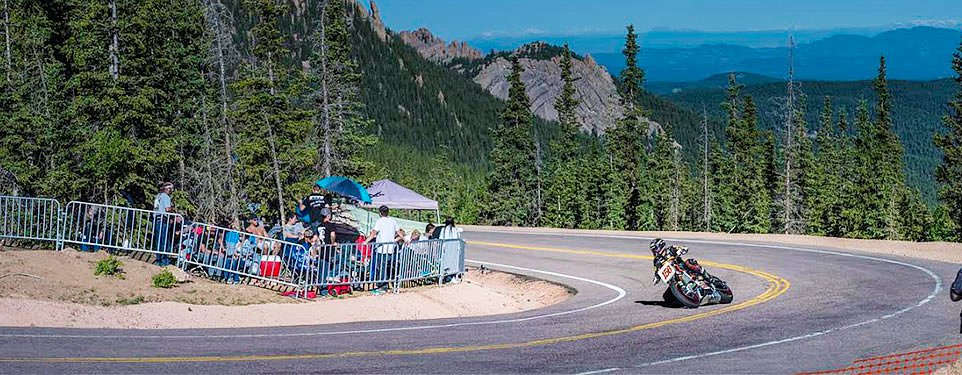If a washing machine had wheels, Chris Fillmore would probably find a way to race it.
Born in Michigan, Chris got started racing motocross before turning pro, spending seven years in the AMA Pro Supermoto series and five in AMA Superbike, campaigning KTMs all the way. It’s no surprise that in his post-racing years he’s found a home with KTM, working with the RC Cup Series and handling press for the brand’s American operations.

Upon learning that Chris intended to race at this year’s Pikes Peak International Hillclimb, all I could think was that Rennie Scaysbrook couldn’t ask for a better teammate. Last year at Pikes Peak, Rennie crashed into a guardrail and tumbled down the mountain, only to climb back up, remount the bike and finish in second place. His stellar performance and unrelenting spirit earned him the “Rookie of the Year.”
In 2017, Rennie shaved more than 30 seconds off his time with a run of 9:57.712 but again was relegated to second place because Chris smashed the record and crossed the finish line in 9:49.625. Both were riding lightly modified KTM Super Duke 1290 Rs. I decided to talk to Chris to see how he became King of the Mountain.

Spurgeon Dunbar: On your first attempt at Pikes Peak, you were able to finish eight seconds ahead of Rennie and the others who have experience on the mountain. How did you accomplish this?
Chris Fillmore: Rennie’s raced growing up and has been to the mountain before, but I've got a pretty deep background of motorcycle riding, and that's not just all road racing. It started in motocross. I then went pro in Supermoto from age 16 to 21. And then decided instead of going back to school I was gonna pursue road racing to keep on living that dream and that lifestyle. I was able to turn road racing into a viable career. So I have a lot of background, and I think … that is what allowed me to do what I did that first year.
SD: Watching the video of your run, it seemed like there were certain points where you were switching between a Supermoto style with your leg out to a Superbike style with the knee down. Was that intentional?
CF: Really the leg out is a "Oh, shit, I'm coming in too fast" kind of thing. It makes me feel a little bit more comfortable. And it's also a way for me to counterbalance the motorcycle and get it to turn in. So naturally when you brake really, really hard, the bike wants to just go straight. And I throw my leg out there and it's almost like a counterbalancer. I'm trying to get my weight to the inside to start making the corner sooner than it would want to do.

SD: So is it more like a supermoto maneuver where your leg is out and your weight is on top of the motorcycle, or are you leaning in while sticking your leg out?
CF: I'm leaning in. It's more of a road race thing. If it was supermoto, it'd be a little bit different. I'd put my weight on the outside of the bike, and kind of low side the bike while I keep my body weight centered. Whereas here I'm trying to keep the bike on the fat of the tire to get as much traction as possible and have the largest contact patch. But I'm also putting my foot out and leaning my head because I'm trying to anticipate the corner coming up.
SD: On a 12.42-mile course with little time to practice, did you try to plan out different approaches for different corners or do you just have to go with what feels right in the moment?
CF: It was more in the moment. You have 156 corners and I had some sequences memorized. Well, I don't even know if memorized is the right thing to say, but I had an idea of what they were and I would count them, you know? A lot of the corners are blind, so a lot of the time I didn't really know where that corner was. Like, I popped up, and when I started braking I realized I got in there way too hot.

SD: You mentioned memorization. How does Pikes Peak differ from other racing platforms you competed in where you really have a chance to get out and learn the racetrack? Were you trying to memorize the whole thing or were you just analyzing it as you went?
CF: Beforehand, it was busy in the office, working a job, traveling to RC Cup races, and building the bike. So I didn't have as much time as I wanted. I had planned on taking the whole month off to focus, and study, and try to wrap my head around Pikes Peak. And it never happened.
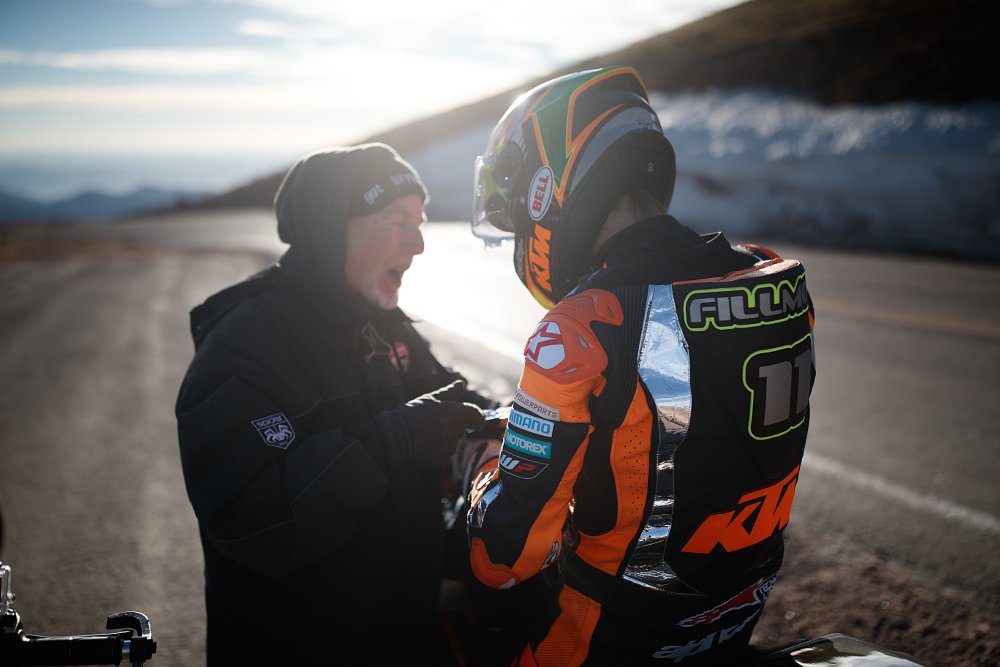
So I went to the tire test, which was two weeks before the race. They call it the tire test, but really it's just a sighting to practice. And I got to see the mountain on the bike, and that helped me the most because then I could kinda visualize it. I mean, by no means did I know where I was going at that point. But I was able to pick up little references so that when I came back home, in between the tire test and the race week, I was able to watch the videos.

I panicked, though. After that first practice I ended up going and buying a PS4. I thought I was gonna play the video game but then I sucked at the video game, so that was just pointless. I couldn't get past the first couple corners without crashing into the trees. So that didn't work, so I went to YouTube videos.
SD: I feel like that's kinda like buying a Tony Hawk skateboarding video game and heading out to a half pipe and being like, "No, guys, I got this. I'm good."
CF: Haha… Well, that's what Rennie said to do. He's like, "It helps me so much." But I didn't take into consideration actually learning how to play the damn game to unlock certain cars that handle better.
SD: How many levels before you can unlock the Rennie Scaysbrook bike?
CF: Dude, it's unlockable.
But yeah, it's tough, man. I mean, there's so much that goes into that mountain. You go to a racetrack and it's a short lap, and you get a bunch of them. Pikes Peak, you get four days of practice, and one of those days is qualifying. You never get to see the whole track until race day.

You have three different sections you practice individually, and then there are these transfers, right? Because each section doesn't end exactly as the next one started. So even though you get to practice the three main sections, there's these transfer sections that you've never seen before at speed.

You’re waking up at 3 o'clock in the morning to be on the mountain at 4 a.m. and riding at 5 a.m. That's all really tough, but the thing that had the most stress for me was on Sunday morning, for our race run, just gearing up, hopping on the bike. No sighting lap, no warm up, and then just, you know, green flag, go. And then it’s time to throw down. As a racer we complain about safety all the time. We want to make sure everything is perfect before we go out and risk everything. Well, you don't really get that opportunity at Pikes Peak, so that one was tough for me.
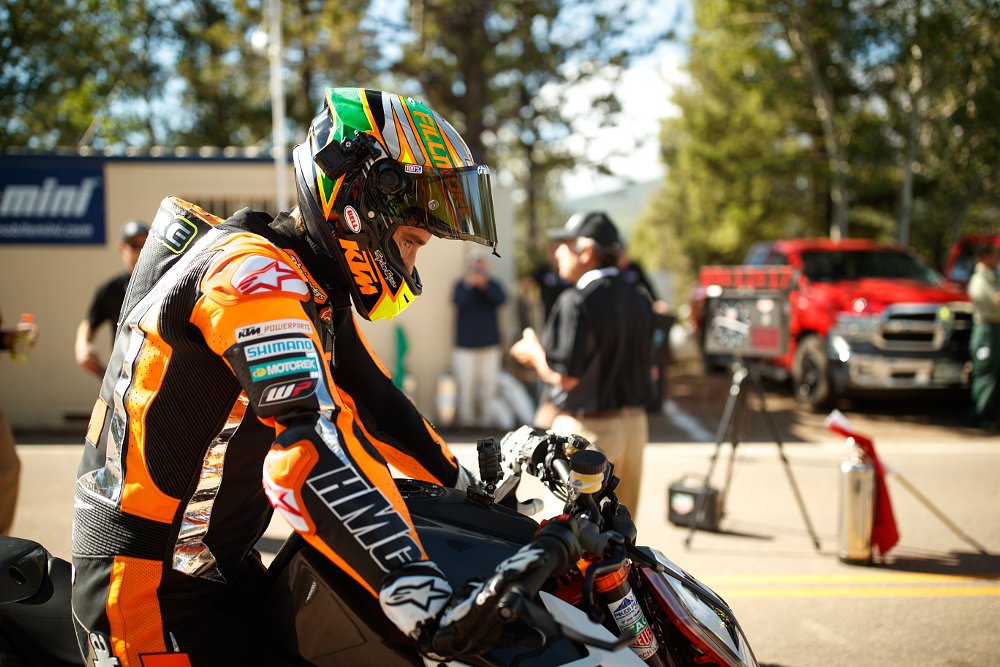
SD: Earlier you mentioned that bike prep was one of the things that deterred you from spending more time trying to learn the track. How was your Super Duke 1290 R modified? Could anybody essentially build the same bike you had?
CF: Anybody can go out and build what we built. We basically picked up the Power Parts catalog that KTM has with all their aftermarket kit parts and we just ordered things.

We ordered triple clamps, rear sets, an exhaust, and then WP makes an internal drop-in kit for the forks, and then an aftermarket shock. So as far as the development side of it, everything else besides the suspension was just a Power Parts kit that you can put on. We played with some different settings on the suspension, but that's something that's readily available as well through WP. And the stuff that we developed, the settings that I came up with, all basically go into the database for WP, and now it can become a customer setting.

But really they're stock bikes, the engine was not touched. We put a Power Commander and a Rottweiler intake on it. Other than that, there's nothing done to the motors. If I can bolt everything on, anybody can bolt it on, you know?
SD: Will you go back to Pikes Peak next year or are you thinking, "Hey, I did this and I'm good. I can check this off my list."
CF: Pikes Peak is definitely something I want to be able to do every single year, but, you know, the risk is huge there, and there are a lot of variables. And I consider myself really, really lucky to get outta there safely.

So at the moment, I don't know. I'm a racer, you know? We forget about a lot of the problems, and a lot of the crashes, and a lot of the moments that we have pretty quickly. It kind of depends on KTM. Without KTM's involvement and support, I wouldn't have been able to do it.
But to go beat my own record? I don't think there's much of a story there. Now if somebody comes back and throws down and outdoes what I already did, then yeah, there's a little bit more drive.
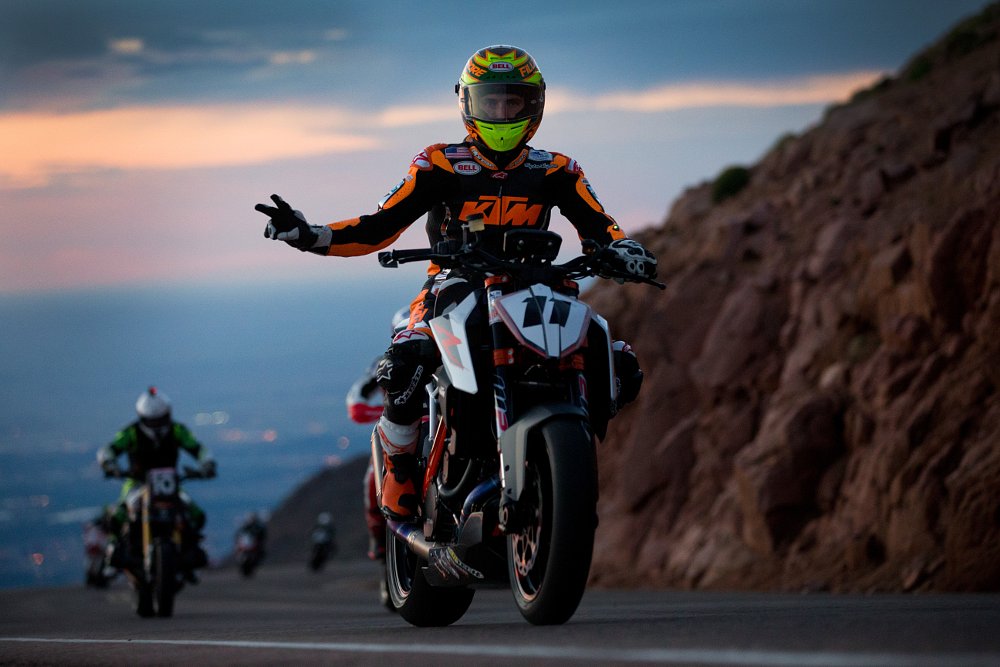
What would get me back there the soonest, and what I'm most interested in, is if I was able to take a middleweight class title. To have multiple titles on that mountain would be a motivation.
SD: You know, I hear KTM is developing a 790 Duke.
CF: Yeah? I’ve heard something about that (laughter). If it's done in time for next year, it could be a really interesting project. KTM's dedicated to racing, so we just gotta figure out unique places to race these motorcycles. And I think we hit the nail on the head with Pikes Peak and the Super Duke. I don't know what will be next. Time will tell.






